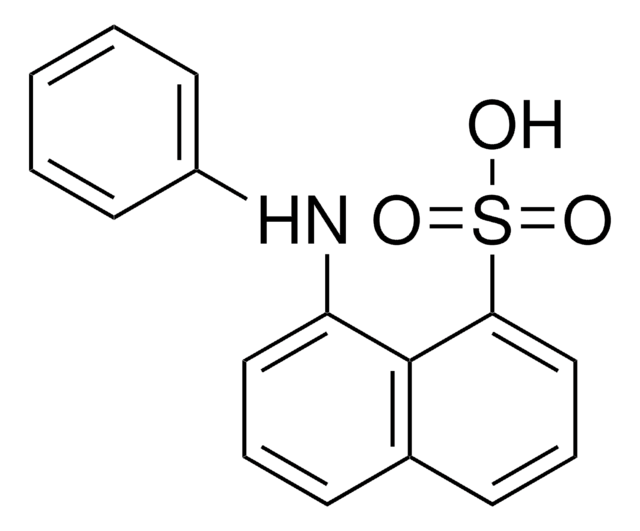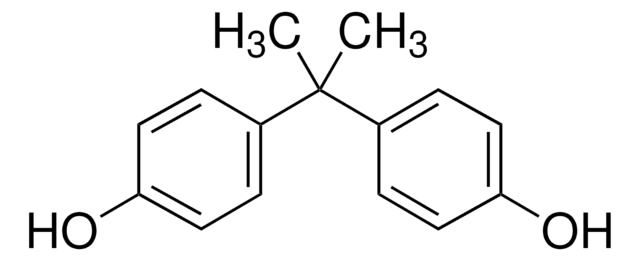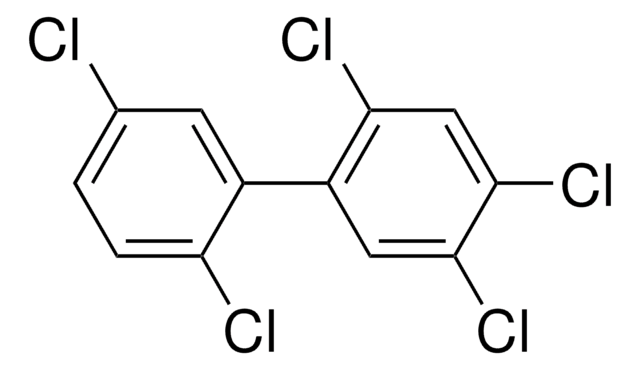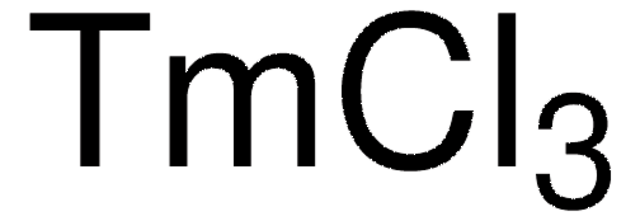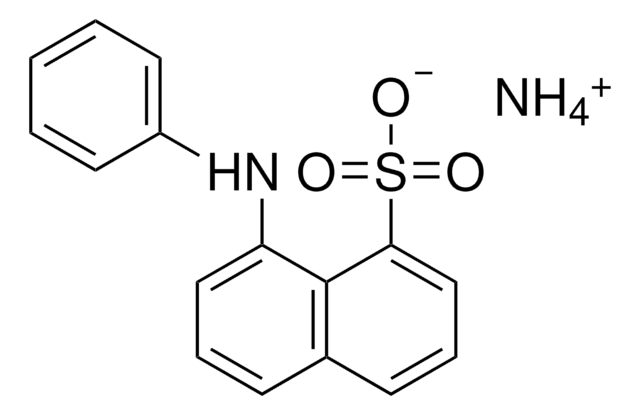41525
N,N-Dimethyl-6-propionyl-2-naphthylamine
BioReagent, suitable for fluorescence, ≥98.0% (HPLC)
Synonyme(s) :
2-(Dimethylamino)-6-propionylnaphthalene, 6-Propionyl-2-(dimethylamino)naphthalene, Prodan
About This Item
Produits recommandés
Gamme de produits
BioReagent
Essai
≥98.0% (HPLC)
Forme
solid
Pf
137 °C (lit.)
Solubilité
DMF: soluble
acetone: soluble
acetonitrile: soluble
methanol: soluble
Fluorescence
λex 361 nm; λem 498 nm in methanol
Adéquation
suitable for fluorescence
Chaîne SMILES
CCC(=O)c1ccc2cc(ccc2c1)N(C)C
InChI
1S/C15H17NO/c1-4-15(17)13-6-5-12-10-14(16(2)3)8-7-11(12)9-13/h5-10H,4H2,1-3H3
Clé InChI
MPPQGYCZBNURDG-UHFFFAOYSA-N
Catégories apparentées
Application
Conditionnement
Autres remarques
Code de la classe de stockage
11 - Combustible Solids
Classe de danger pour l'eau (WGK)
WGK 3
Point d'éclair (°F)
Not applicable
Point d'éclair (°C)
Not applicable
Équipement de protection individuelle
Eyeshields, Gloves, type N95 (US)
Faites votre choix parmi les versions les plus récentes :
Déjà en possession de ce produit ?
Retrouvez la documentation relative aux produits que vous avez récemment achetés dans la Bibliothèque de documents.
Les clients ont également consulté
Articles
Nitric oxide (NO) as a signal transporter in neurons, endothelial cells and in the immune system.
Notre équipe de scientifiques dispose d'une expérience dans tous les secteurs de la recherche, notamment en sciences de la vie, science des matériaux, synthèse chimique, chromatographie, analyse et dans de nombreux autres domaines..
Contacter notre Service technique